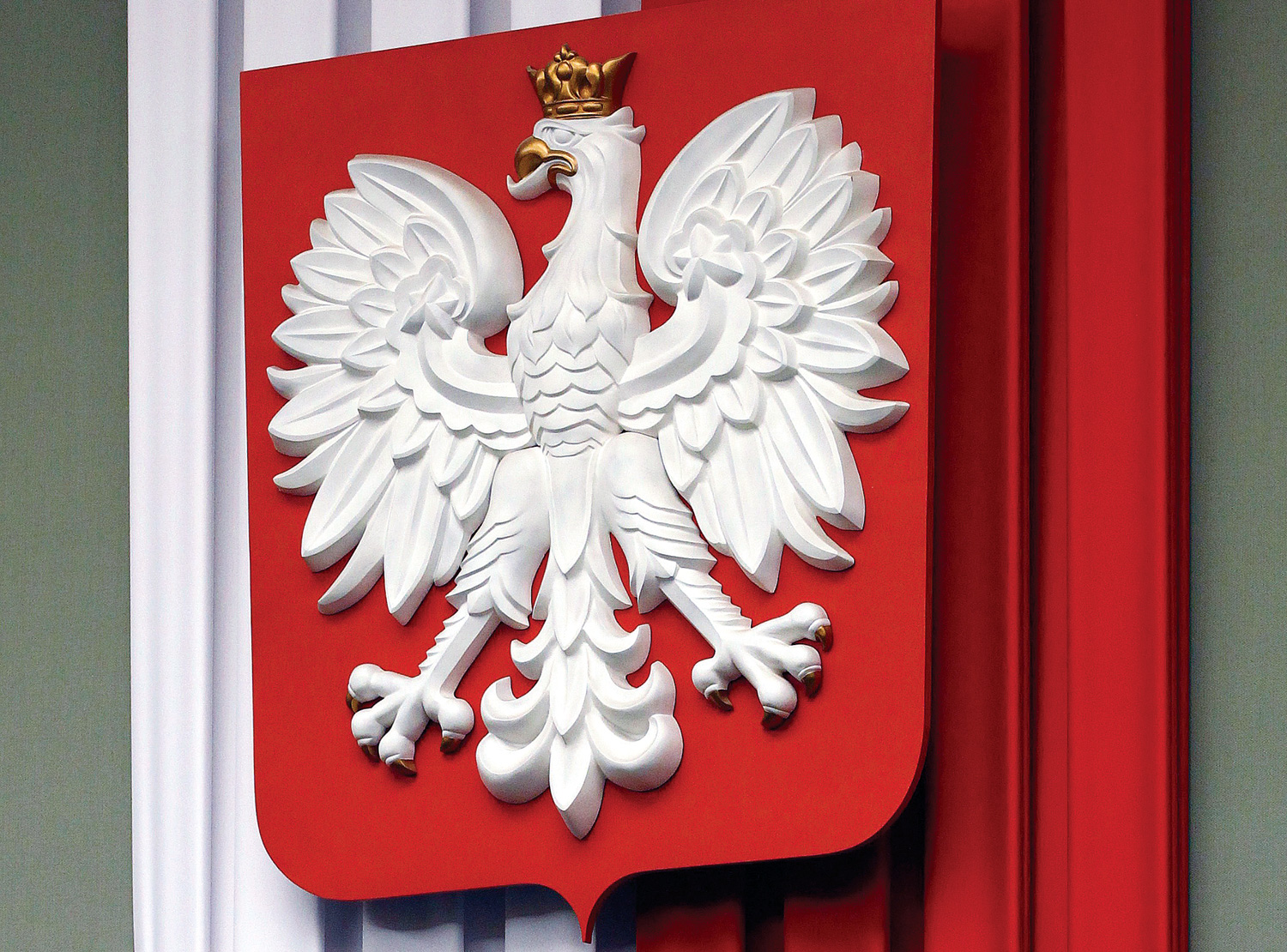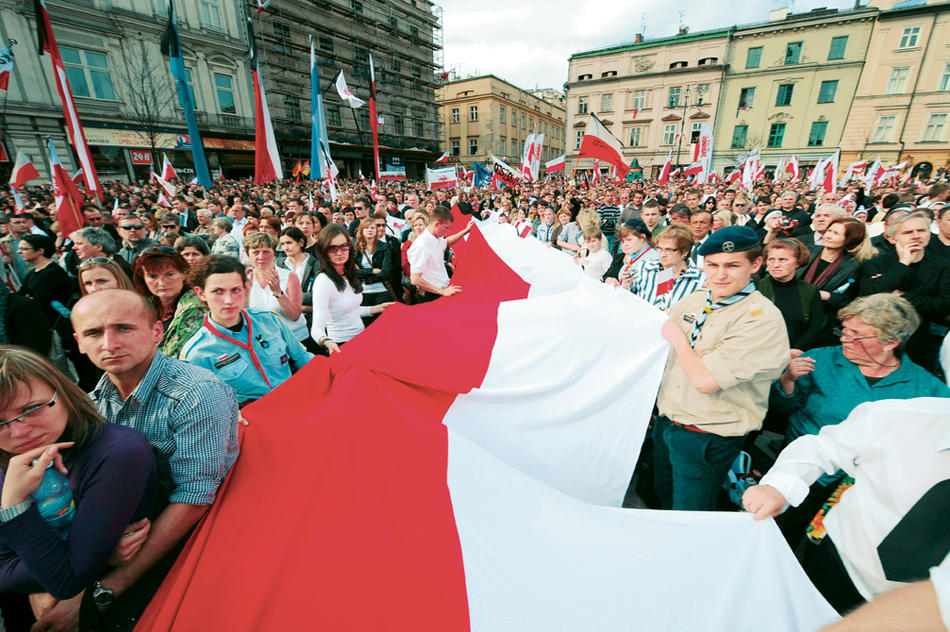
It has been a dreadful spring here in Poland.
The country was barely coming to grips with the death of its president and other leaders near Katyn in April when intense rains in May and again in early June caused the worst flooding in more than a century — what the prime minister called the worst natural disaster in Polish history. Twenty people died, thousands more had to be evacuated, crops were wiped out, and damages totaled more than $3 billion. Entire towns remain off-limits. Here in Warsaw, residents nervously eyed the rising Vistula River, which slices through the city on its way north toward the Baltic.
Some people I talk to blame the government for not having strengthened defenses after the terrible 1997 floods. The major political parties, weeks before the June elections, make promises and counterpromises to flood victims. In the midst of all this, the average Pole is mostly worried about how he’s going to pay his bills.
If there is one hopeful development this spring, it may be the promise of a thaw in the icy relations between Poland and Russia.
My graduate students at Warsaw University’s Eastern Studies Center, where I taught a course this May on the recent history of East Central Europe since the fall of the Soviet Union, have surprising things to say about ongoing events. They are a diverse group. There are Poles, of course, and also Azerbaijanis, Belarusians, Georgians, Hungarians, Ukrainians, and Russians. I ask them what they make of the apparent rapprochement from Moscow, which seems to be the warmest since the days of Boris Yeltsin. Closer relations are a good thing, they tell me; no one could object to that. But, they warn me, Poland needs to be cautious. They ask me if I have seen the article in Rzeczpospolita, a Warsaw daily newspaper. I haven’t. One of them shows me the paper. Five Russian dissidents have published an open letter warning Poland not to trust Moscow in connection with the Katyn crash: “It seems that the Polish friends are demonstrating some naïveté, forgetting that the interests of the current Kremlin leadership and those of Russia’s neighbors do not converge.”
My class agrees. One Russian student remarks, “The Russian government’s current policy toward Poland can be characterized as one of soft power, which can quickly change and have an impact on the life of a ‘partner.’”
After class, walking along Ulica Krolewska, past the Tomb of the Unknown Soldier, toward the subway that will take me home, I am reminded that that kind of exchange is what makes being here from time to time so valuable.
Katyn I and Katyn II
Poles were horrified when they turned on their radios and televisions on April 10 and heard that President Lech Kaczynski, his wife, Maria, and 94 others — a cross section of Poland’s political elite — had been killed when their airplane crashed in the woods of Smolensk, Russia. The delegation had been flying to Katyn, where in April 1940 the Soviet NKVD massacred more than 4000 Polish officers and reserve officers.
On the plane were 2 presidential candidates, 3 senators, 15 parliamentary representatives, clergy, members of the families of the Katyn victims, and the heads of the various services of the Polish armed forces. Two vice ministers responsible for relations with NATO and with Russia also perished in the disaster.
Not since the death of Pope John Paul II five years before had the Polish people been so shaken. Most of them did not go to work for a week. For 10 days they watched the planes come in with coffins and saw the processions of Mercedes hearses. (The country had neither enough hearses nor caskets; extra hearses had to be brought in from Germany and special caskets from Italy.) But then, no country is ever prepared to have nearly 100 of its leaders killed and then have public funerals for all of them. The sense of disbelief was intensified by the fact that the tragedy had occurred in, of all places, Katyn.
In September 1939, while the Poles were fighting the Germans to the west, north, and south, the Soviets invaded eastern Poland and captured hundreds of thousands of POWs. Most of the Polish enlisted personnel were allowed to go home, while the officers were kept in three holding camps. Andrzej Wajda’s 2007 film Katyn re-creates the soldiers’ confusion and their families’ anguish, as many who thought that they were being transferred to different camps and better situations were murdered.
In all, the Soviets killed about 22,000 officers and reserve officers, along with doctors, professors, and other professionals — the elite of Poland — and for decades blamed the Germans. The Communist Party of the Russian Federation, the second-largest party in Russia, blames them even today.
Until 1989, the Communist Party line in Poland was, “We don’t talk about Katyn.” In Polish schools, children were not told about the massacre unless a teacher was willing to risk the consequences.
Katyn represents part of the battle for Poland’s historical memory. In 1992, Boris Yeltsin, president of what was by then Russia, very publicly admitted Soviet responsibility for the atrocity and even pledged to punish any perpetrators who were still alive. But after Putin came to power in 2000, that was the end of that. Along with cancelling the subsidization of energy exports and moving to more commercially oriented dealings, Putin backtracked on Katyn, and Polish-Russian relations went into a deep freeze.
After April’s crash, though, the Russians realized that they had a potential public relations coup in the making. Admitting the truth about what happened 70 years earlier would cost them little, and that acknowledgment might help remove one of the historical barriers that have separated the Poles from the Russians. So Putin met Prime Minister Donald Tusk in Smolensk and gave him a much-publicized hug. In a very short time, the Russian government changed its policy on Katyn: Wajda’s movie was shown on Russian TV, it was discussed in Russian newspapers, and the Russian state archives put up on its Web site some of the Katyn documents that Yeltsin had handed over to the Poles in 1992.
Most Poles welcome this change, along with Putin’s decision to take charge of the investigation into the crash, which seemed to be a guarantee that the Russians would be taking this very seriously. Others, like my students, urge caution. And some, because of the historical meaning of Katyn, think that this wasn’t an accident — that this was somehow the work of the Russians. The conspiracy theories come thick and fast. For these people, no investigation — Russian or Polish — will ever be satisfactory.
Starting Again
In the event of the death of the president, the Polish constitution provides that the speaker of parliament take on the role of acting president and that elections be held within 60 days. Jaroslaw Kaczynski, the late president’s twin brother, announced in late April that he would be running for president as the candidate of the Law and Justice Party. Former prime minister and current deputy prime minister Waldemar Pawlak was the first to provide the electoral commission with the necessary minimum of 100,000 supporters’ signatures. The Civic Platform’s candidate is Acting President and Speaker of the Parliament Bronislaw Komorowski. Of the roughly two dozen hopefuls who announced that they would try their luck, 10 met the legal requirements to run for the office.
Komorowski and the Civic Platform, which, with its coalition partner, the Peasant Party, now runs the government, are eager to have better relations with Russia. However, that does not mean that they want to have poorer relations with the United States; quite the opposite. Because of their history, most Poles understand that security is exceedingly important and having partners like the United States and NATO, which Poland joined in 1999, is essential.
A few weeks before the presidential election, four out of five of my Polish students think that Acting President Komorowski will defeat the conservative Kaczynski. Residents of economically challenged areas, older voters, and rural voters — a broad cross section of society — think otherwise. As of early June, various polls indicate that Komorowski will wind up just short of the 50 percent plus one vote needed to win the elections in the first round of voting.
Kaczynski is polling in the mid-thirties. As election day draws nearer, both candidates will approach other parties in an effort to have them withdraw their candidates either before or after the first round.
With a second wave of rain and flooding in early June, the weather may well be a determinant in the outcome of the election. A perceived misstep by the government or by Komorowski could have serious consequences. And Poles are notorious for acting contrary to electoral forecasts. (The late president was behind in the polls until election day.) Whoever wins will be part of the team that will not only lead Poland, but serve as the president of the Council of the European Union from July 1, 2011, through December 31, 2011. This is an unprecedented opportunity to wield real influence on EU decisions, including those that affect relations between the EU and Russia. The stakes are therefore high, as the newly elected Hungarian prime minister Viktor Orban demonstrated by choosing Warsaw for his first postinauguration foreign visit on May 31. Hungary will precede Poland in the EU presidency and the two countries have been discussing and coordinating their priorities since 2008.
As I approach Marszalkowska Street, one of Warsaw’s main thoroughfares, a red Ferrari blasts by. For a few years I’ve been seeing fancy cars, new apartment and office buildings, and well-dressed Varsovians chatting away on cell phones. Poland’s economic health is remarkably robust: It is the only country in Europe to show growth in 2009, and both inflation and unemployment are low. People have forgotten that when Lech Walesa became president in 1990, a Polish citizen had to wait 56 years for an apartment in a co-op.
While life in the capital is good, at least for the moneyed class, most Poles, and certainly those in the east and other rural areas, are not driving BMWs. Many are struggling and will continue to struggle after the floods recede, the plane crash investigation is concluded, and relations with Russia warm or cool. That, of course, will be the great challenge once the new president is sworn in.



